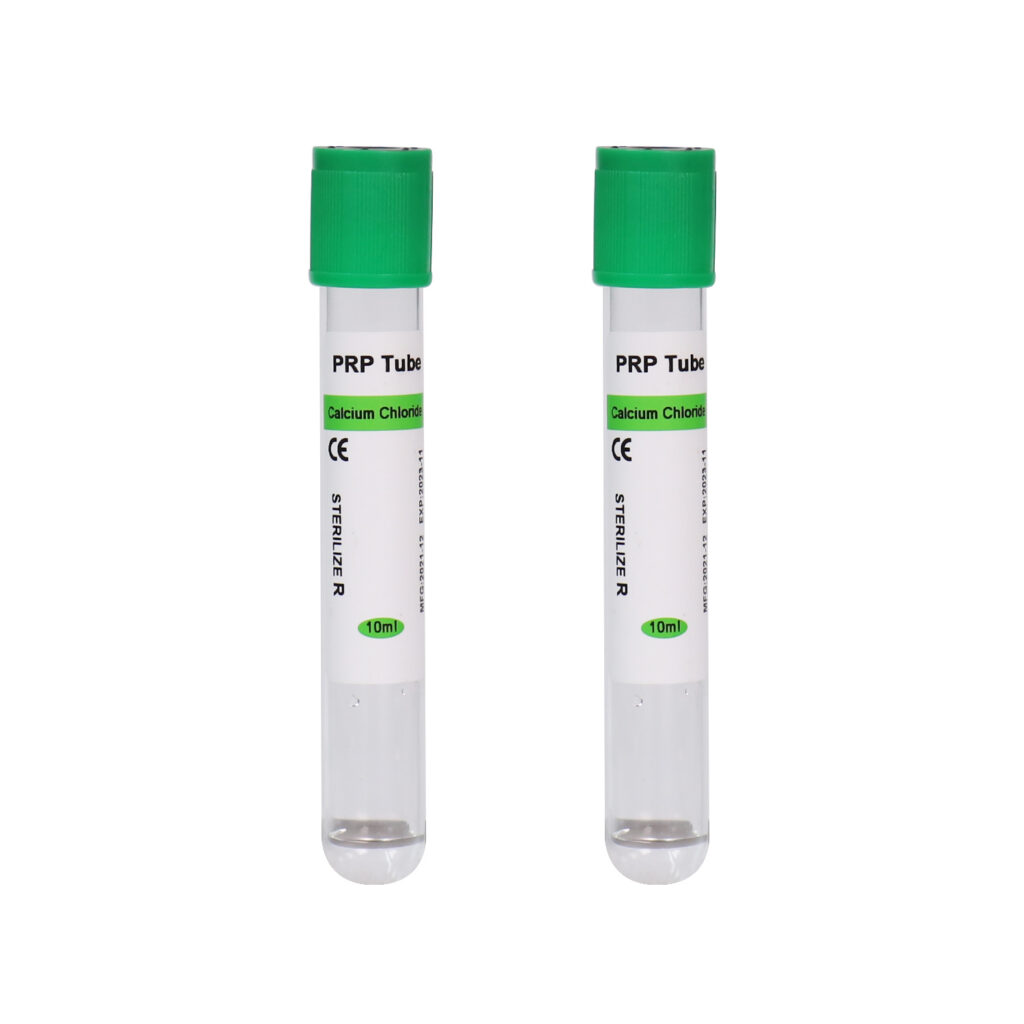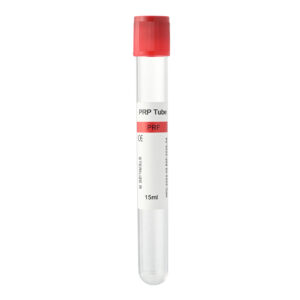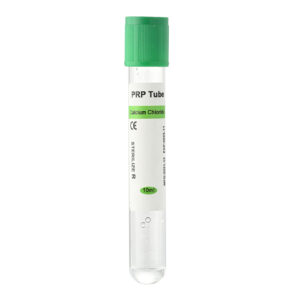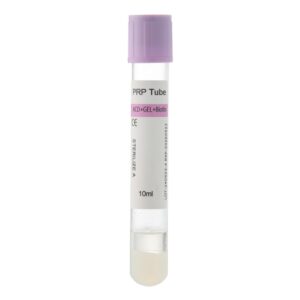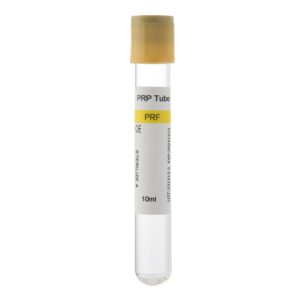Definition and Role of PRP:
PRP, or Platelet-Rich Plasma, is a type of plasma rich in platelets obtained from peripheral blood through centrifugation. Platelets contain various growth factors such as Platelet-Derived Growth Factor (PDGF), Transforming Growth Factor-β (TGF-β), and Epidermal Growth Factor (EGF).
Principle of Lithium Heparin:
Heparin tubes, also known as green-top tubes or lithium heparin tubes, are used in medical and laboratory settings for blood collection. They contain a specific type of anticoagulant called heparin, which prevents blood from clotting by inhibiting clotting factors in the sample. Lithium heparin enhances the action of antithrombin III, thereby inhibiting thrombin and other clotting factors and preventing blood coagulation.
Advantages of Lithium Heparin Tubes:
- Anticoagulation Effect: Lithium heparin effectively prevents blood from clotting in the tube, ensuring the stability of the blood sample before centrifugation. Compared to EDTA and sodium citrate, lithium heparin has a smaller impact on platelet function, helping to maintain platelet activity.
- Ease of Use: Lithium heparin tubes are easy to use. Simply mix the lithium heparin in the tube before blood collection. The process is simple and efficient.
- Sample Stability: Lithium heparin maintains the stability of the blood sample for a longer period, ensuring the quality of subsequent centrifugation and PRP extraction.
Specific Applications of Lithium Heparin Tubes in PRP Preparation:
- Blood Collection: The first step in PRP preparation involves collecting the patient’s blood using a lithium heparin tube. Lithium heparin prevents blood from clotting after collection, preserving the integrity and quality of the blood sample, which is crucial for maintaining platelet activity in subsequent processing.
- Centrifugation: the collected blood sample is centrifuged to separate its components into red blood cells, white blood cells, plasma, and platelets. Typically, a two-step centrifugation method is used: the first centrifugation separates plasma from blood cells, and the second centrifugation further concentrates the platelets to produce PRP.
- PRP Extraction: After centrifugation, the blood sample separates into layers: the top layer is plasma, the middle layer is platelet-rich plasma (PRP), and the bottom layer consists of red and white blood cells. Carefully extract the middle layer of PRP, avoiding contamination with other cellular components. The high concentration of platelets and growth factors significantly aids tissue repair and regeneration.
Applications:
- Platelet Count and Concentration Testing:
- Platelet Count: Before preparing PRP, the platelet count in the blood sample is measured to determine the initial platelet concentration. Lithium heparin tubes prevent blood clotting, ensuring the accuracy of the platelet count.
- PRP Concentration Testing: After preparing PRP, one measures the platelet concentration in PRP to evaluate the preparation’s effectiveness. Using lithium heparin tubes to collect blood samples prevents platelet aggregation, enhancing the reliability of the test results.
- Growth Factor Level Testing:
- Growth Factor Content Analysis: Key components in PRP are various growth factors like PDGF and TGF-β. By collecting blood samples and performing biochemical analyses, we can determine the content of these growth factors. The anticoagulant action of lithium heparin ensures the stability of growth factors, preventing degradation during collection and processing.
- Plasma Component Analysis:
- Protein Profiling: Detailed analysis of the protein components in PRP using mass spectrometry or other analytical methods to understand their composition and function. Lithium heparin tubes ensure the sample remains unaffected by coagulation, guaranteeing the accuracy of the test results.
- Electrolyte and Metabolite Detection: Evaluating the biological activity and metabolic status of PRP by measuring the concentration of electrolytes (e.g., sodium, potassium, calcium) and metabolites (e.g., glucose, lactate). Lithium heparin tubes maintain the chemical stability of the blood sample, aiding in obtaining reliable test results.
- Cytokine and Inflammatory Marker Detection:
- Cytokine Level Measurement: During PRP treatment, detecting cytokine levels (e.g., IL-1, IL-6, TNF-α) in blood and PRP can assess inflammatory responses and treatment efficacy. The anticoagulant property of lithium heparin ensures the stability of cytokines during testing.
- Inflammatory Marker Analysis: Monitoring levels of inflammatory markers like C-reactive protein (CRP) and interleukins to track inflammation changes during PRP treatment. Lithium heparin tubes prevent blood sample coagulation, ensuring the precision of marker detection.
- Blood Coagulation Function Testing:
- Coagulation Function Assessment: Monitoring the coagulation function of patients during PRP treatment to ensure safety. Using lithium heparin tubes to collect blood samples allows for tests like clotting time and clotting factor levels, evaluating changes in blood coagulation function.
Precautions:
- Control of Anticoagulation Effect: Lithium heparin should be moderate to prevent blood coagulation without overly affecting platelet activity. Shake the tube before blood collection to ensure even distribution of lithium heparin.
- Centrifugation Parameters: Adjust the speed and time of the centrifuge according to specific requirements to ensure optimal PRP separation. Excessive centrifugal force may damage platelets, while insufficient force may not fully separate them.
- Sterile Operation: To prevent sample contamination and ensure the safety and efficacy of PRP, one must follow strict sterile procedures throughout the process.
Final Thoughts
Lithium heparin tubes are crucial in PRP preparation, providing a reliable foundation for medical and cosmetic fields. Through effective anticoagulation and efficient platelet extraction, lithium heparin tubes ensure high-quality and bioactive PRP, significantly enhancing the efficacy of PRP treatments. In the future, as technology advances, the application of lithium heparin tubes in PRP preparation will become more widespread and refined, offering more clinical benefits to patients.

